There are two types of marketers today: Gamblers and Leaders.
Gamblers take shots in hopes that their campaign goes viral—while leaders look to build genuine, impactful campaigns that evoke strong emotions from their audience.
Campaigns like this are often led by genuine insights that inspire creative executions that people connect with and want to see more of. But behind any successful campaign lies a trail of long meetings, stretching creative muscles, experimentation, and sometimes, failed ideas that go viral for the wrong reasons.
Marketing Victories: Campaigns That Pushed the Envelope and Succeeded
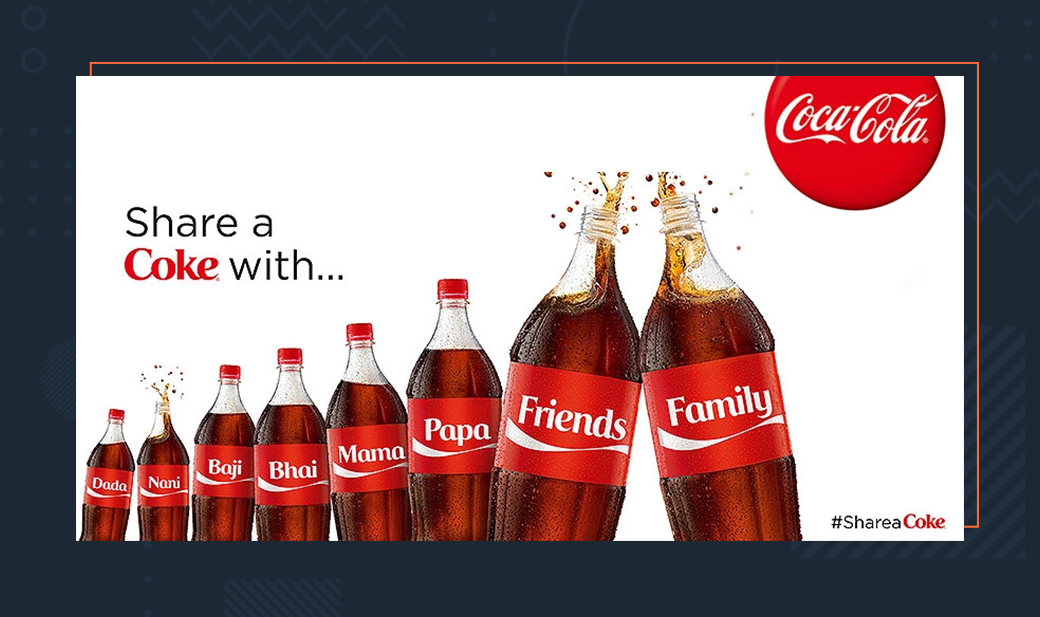
The “Share a Coke” Campaign by Coca-Cola
Starting in Australia in 2011, this campaign took personalization to the next level, replacing the iconic Coca-Cola logo on their bottles with 250 of the most popular names among teens and millennials.
Even over a decade ago, they knew this personal touch would help consumers feel a stronger connection with the brand. But why did it become so popular?
Using Social Media and Word-of-Mouth Marketing
- Coca-Cola encouraged people to share photos of their personalized bottles on social media using the hashtag #ShareACoke, which not only created buzz about the product but also encouraged UGC and helped spread awareness of the campaign organically.
Creating an Emotional Connection Through Personalization
- By utilizing personalization as the main idea behind the campaign, Coca-Cola tapped into the emotional aspect of consumer behavior. Consumers were motivated to purchase Coke products not only for themselves but for family and friends when they saw their names on the side of the bottles—helping to establish more connection and community.
Taking the World by Storm: The Global Appeal
- Once the campaign took off in Australia, it launched in over 80 countries across the globe with names tailored to each region’s culture, which helped ensure the campaign’s continued relevance across diverse markets.
This campaign continued to evolve through the years, introducing new names, slogans, and even song lyrics to keep consumers coming back for more—and it continued to succeed, generating 1.5 billion personalized bottles and over 100 million social media interactions.

The “Real Beauty” Campaign by Dove
The “Real Beauty” campaign by Dove was a groundbreaking marketing initiative that aimed to challenge beauty stereotypes while building self-confidence in women and young children. Since its launch in 2004, this campaign has evolved to include many initiatives, including ‘Dove Real Beauty Sketches,’ that have allowed Dove to address different aspects of the beauty industry and empower women to embrace their unique features and form a positive relationship with their bodies.
But how did they push boundaries to become more than just a skincare brand?
Celebrating the Diversity of Real People
- A key part of the campaign’s success was Dove’s decision to feature women of different ages, ethnicities, skin types, and body shapes, showcasing the ‘real beauty’ of people instead of the unrealistic ideals usually seen in the media. This resonated with women who were looking for a more authentic representation of beauty and helped empower women to challenge traditional beauty standards.
Tapping Into the Audience’s Emotions
- One of the most powerful drivers for brand loyalty is strong emotion, and Dove took a big risk by tapping right into one of the biggest insecurities that women face daily. Poor execution of the campaign would’ve hurt Dove’s brand reputation—instead, it resonated with women and made them feel seen, resulting in an expanded campaign that would run for years.
Taking on Responsibility
- By starting this campaign, Dove had to take a strong stance on their values and beliefs and get people thinking while also being the change they wanted to see. They created a fund and partnered with organizations like the Girl Scouts and Boys & Girls Clubs of America to organize activities and discussions about online bullying.
While many brands who would’ve tried this type of campaign may have flopped, Dove succeeded by staying true to their message and changing the way beauty brands advertise their products. The “Real Beauty” campaign’s website would draw over 1.5 million visitors, increasing Dove’s revenue by 10% in a single year.
Now, 20 years later, the campaign continues to run and empower women across the globe.
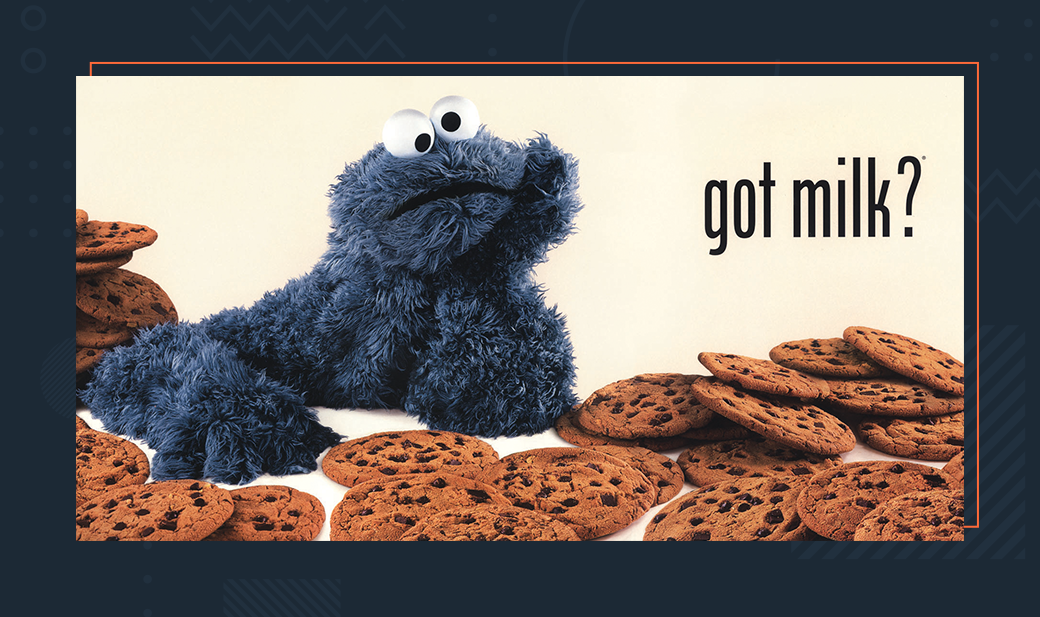
The “Got Milk?” Campaign by the California Milk Processor Board (CMPB)
This one is going to feel nostalgic for almost everyone.
The “Got Milk?” campaign is one of the most iconic and successful advertising campaigns, using humor and creativity to highlight the benefits of drinking milk, which everyone who was a student in the 90s and early 2000s will remember. Initially created when milk consumption had declined by almost 20%, the CMPB wanted to stop the crisis and get more Americans drinking milk. The iconic milk mustache may be seared into some of our brains, but what else made this viral campaign so successful?
Mixing a Simple Slogan with Humor
- “Got Milk?” It’s short, catchy, and easy to remember, and even though the campaign launched over 30 years ago, it’s instantly associated with the ads compelling consumers to drink more milk. The iconic ads captured the audience’s attention by depicting humorous situations where people faced problems because they hadn’t been drinking enough milk.
Utilizing Celebrity Endorsements to Tout the Benefits
- This campaign featured tons of different celebrities from various fields, including actors, musicians, and athletes, that helped add appeal to the ads and made them more engaging for consumers. While the ads were humorous, they focused on highlighting the benefits of drinking milk and emphasized it as part of a healthy diet.
Using Cross-Platform Promotion and the Cultural Impact
- Marketers utilized various channels to promote this campaign, including television, print, billboards, and digital platforms, to reach a wide audience and ensure the message was communicated to consumers across different demographics. The “Got Milk?” slogan was widely parodied and referenced in pop culture throughout the next few decades and continues to be recognizable today.
What began as a simple campaign to increase milk consumption in America turned into a successful marketing initiative that ran for over two decades, a testament to its effectiveness in connecting with the audience. “Got Milk?” led to an increase in milk sales and consumption and won numerous awards for its creativity and effectiveness.
Marketing Flops: Campaigns That Missed the Mark in a Big Way
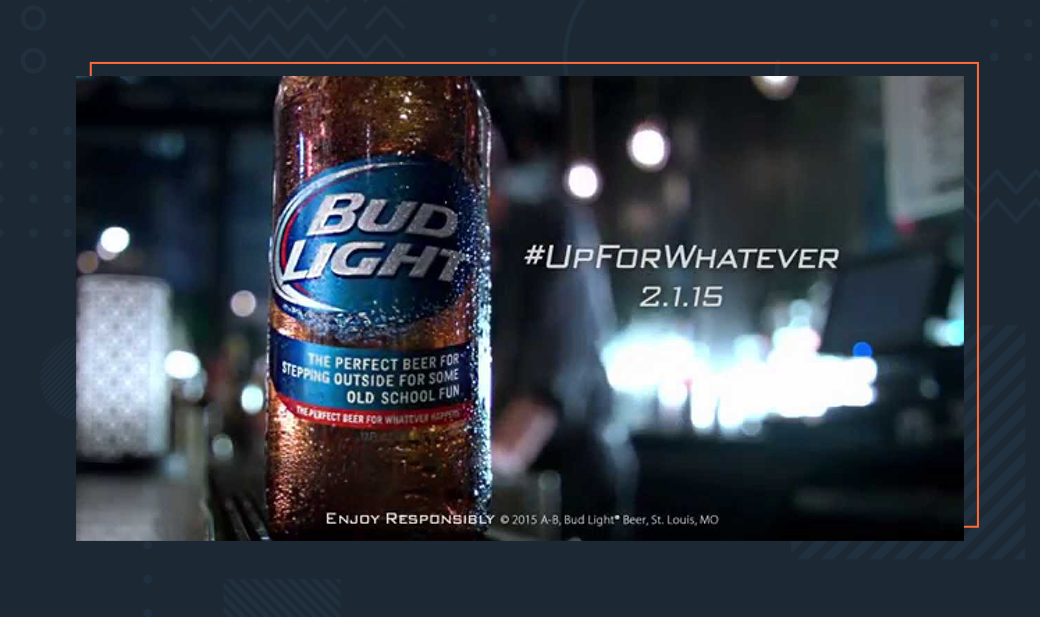
The “Up for Whatever” Campaign by Bud Light
Not every campaign can be a home run, and the “Up for Whatever” campaign by Bud Light is one of those viral flops. The campaign aimed to position Bud Light as a symbol of spontaneity, fun, and adventure, using commercials and advertisements showcasing young adults participating in unexpected and exciting experiences.
You might be thinking this sounds like a great base for a campaign, so why did it flop? One bad tagline and a mountain of criticism.
Creating a Controversial Tagline
- The campaign ran smoothly for a while until a new slogan was printed on new Bud Light labels— “The perfect beer for removing ‘no’ from your vocabulary for the night.” The idea was to have people come together for fun, but the connotation behind the message absolutely missed the mark with consumers.
Facing the Backlash and Negative Publicity
- Consumers took to the internet with their displeasure and condemned Bud Light for the campaign’s implications regarding consent and their potential contribution to the culture that disregards responsible alcohol consumption. Users across the internet started using #UpForConsent (a nod to the campaign’s #UpForWhatever hashtag), and eventually, the phrase was removed from all messaging in the campaign.
Apologizing and Next Steps
- Bud Light almost immediately issued an apology and removed the controversial slogan from its marketing materials to mitigate any damage done to the brand. Bud Light’s vice president offered an apology, saying, “We would never condone disrespectful or irresponsible behavior. As a result, we have immediately ceased production of this message on all bottles.”
The quick demise of this campaign and the damage done to the brand’s reputation just goes to show how one bad tagline out of 140 can make or break your campaign. While this instance wasn’t the first time the “Up for Whatever” campaign faced backlash, it was enough to put the nail in the coffin and end the campaign for Bud Light.
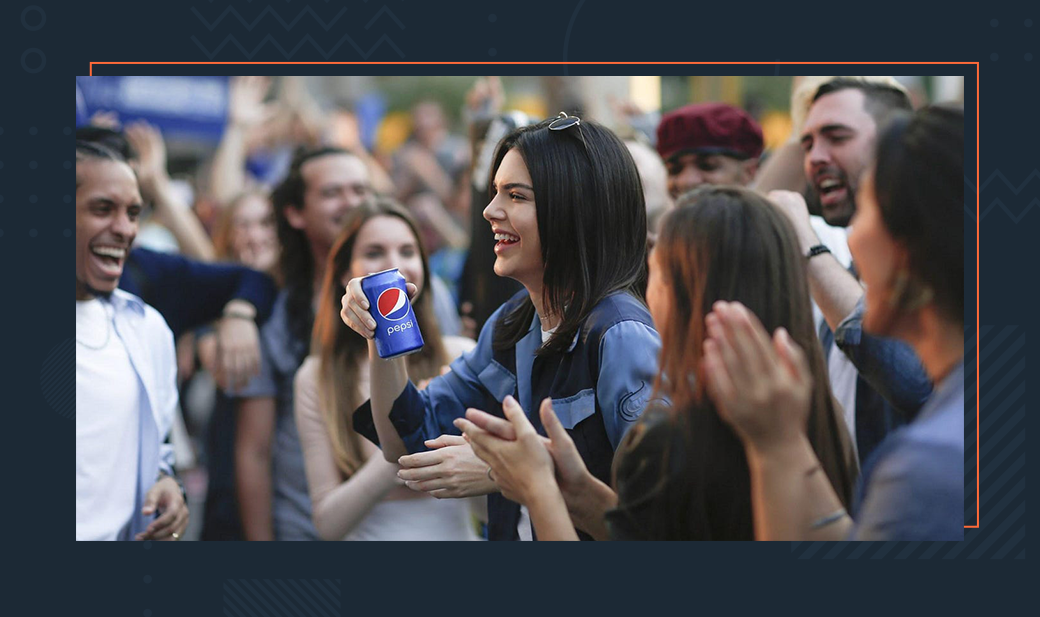
The “Live for Now – Moments” Campaign by PepsiCo (featuring Kendall Jenner)
It’s probably a safe bet that you remember the dreaded “Live for Now” Kendall Jenner/Pepsi commercial from 2017. Created to convey a message of unity, peace, and understanding amid social and political unrest, the campaign did everything but that. Instead of appealing to millennials and presenting PepsiCo as socially relevant, the ad was immediately met with widespread criticism and backlash. But why exactly did the ad fail so spectacularly?
A Controversial Take Sparks Outrage
- The commercial began simply with Kendall Jenner joining a heated protest that she subsequently ended by handing a can of Pepsi to the nearest police officer. While PepsiCo thought the message was about coming together as a people, consumers thought it was trivializing social justice movements and appropriating them for commercial gain.
Then Came Backlash and Public Outcry
- After airing, the commercial received widespread backlash on social media, and many consumers, along with activists and advocacy groups, condemned Pepsi and Kendall Jenner for their insensitivity on the topic and the exploitation of social justice movements.
Making Amends and Moving Forward
- The commercial received so much backlash that PepsiCo quickly pulled it from airing after only a single day and released a statement saying, “Clearly we missed the mark, and we apologize. We did not intend to make light of any serious issue”. While the apology was well intended, the damage to the brand had already been done with many consumers expressing disappointment in PepsiCo’s marketing approach.
What was supposed to be a lighthearted ad that helped Pepsi relate to millennials and position itself socially relevant ended badly for PepsiCo. The ad was later parodied on Saturday Night Live as well as on Amazon’s The Boys, and sales hit an all-time low in the years following the commercial’s release.

The “Man in the High Castle” Campaign by Amazon
When Amazon’s new show, The Man in the High Castle, was getting ready to premiere in 2015, Amazon created bold advertisements in the New York City subway to generate some positive buzz around this alternate-history show. They created immersive ads that covered subway seats and the walls of subway cars, but instead of making people want to watch, they just made people uncomfortable. Why did such a bold marketing move lead to a ton of backlash for Amazon?
A New Approach Falls Short
- The immersive ads papered an NYC subway car in designs resembling Nazi and Imperialist Japanese imagery to promote the show’s alternate timeline, but instead of getting people excited about the show, it just made people uncomfortable. Critics argued the ads trivialized World War II and failed to consider the impact the ads would have on the public.
Removing Marketing that Didn’t Work
- Amazon faced enough backlash on the subway ads to remove them before the campaign had run its course, with public officials like Mayor Bill de Blasio condemning the campaign and calling for its immediate removal.
Impact on Brand Reputation Moving Forward
- Enough backlash was received to warrant Amazon removing the subway car ads for the show. The campaign harmed Amazon’s brand reputation since many consumers expressed outrage and disappointment with the marketing approach.
The immersive subway took people back to a time of outrage and anger, backfiring on Amazon’s plan to raise awareness about their newest show and instead underscored the importance of cultural awareness and sensitivity in marketing campaigns. It also served as a warning to other brands about the risk of using controversial imagery and its impact on their audience.
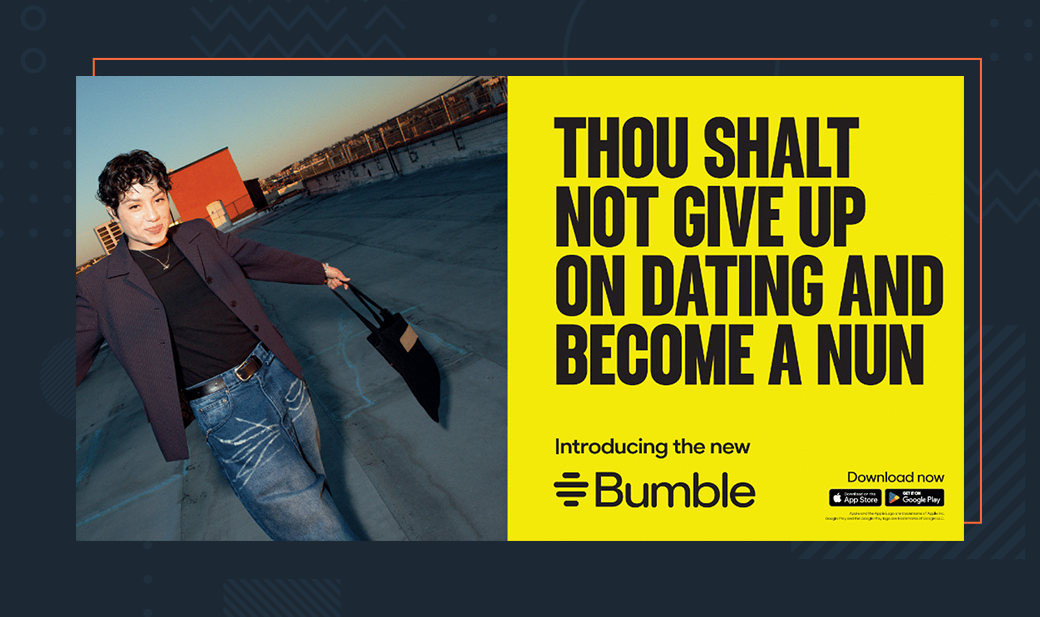
Honorable Mention: Bumble Fumbles Their Rebrand
In an attempt to rebrand, redefine dating for women, and bring people back to their app, Bumble recently created a set of commercial and billboard ads that mocked celibacy as an alternative to dating.
Tag lines like “Thou shalt not give up on dating and become a nun” and “You know full well a vow of celibacy is not the answer” were seen on billboards and were such a departure from Bumble’s original brand message of letting women have the power in dating. Consumers were rightfully shocked and quickly pointed out that while the new ads were supposed to be empowering, they were everything but that.
Bumble quickly removed all posts and videos featuring the new campaign and released a statement saying, “We made a mistake. Our ads referencing celibacy were an attempt to lean into a community frustrated by modern dating, and instead of bringing joy and humor, we unintentionally did the opposite.”
Learn, Earn, and Grow by Understanding Viral Marketing
By understanding what made certain marketing campaigns succeed and others fail, you can figure out the strategy that works best for your brand—and at AGAIN Interactive, we’ve got just the right people to help you do it.
Shoot us a message at info@againinteractive.com and learn how we can help you create a complete marketing campaign.

Caitlyn Huguenel
A member of the talented AGAIN creative team—has been an avid writer her entire life. When she's not creating killer content, Caitlyn can often be found with a book and coffee in hand or perusing her local plant nursery for the perfect indoor houseplant.
